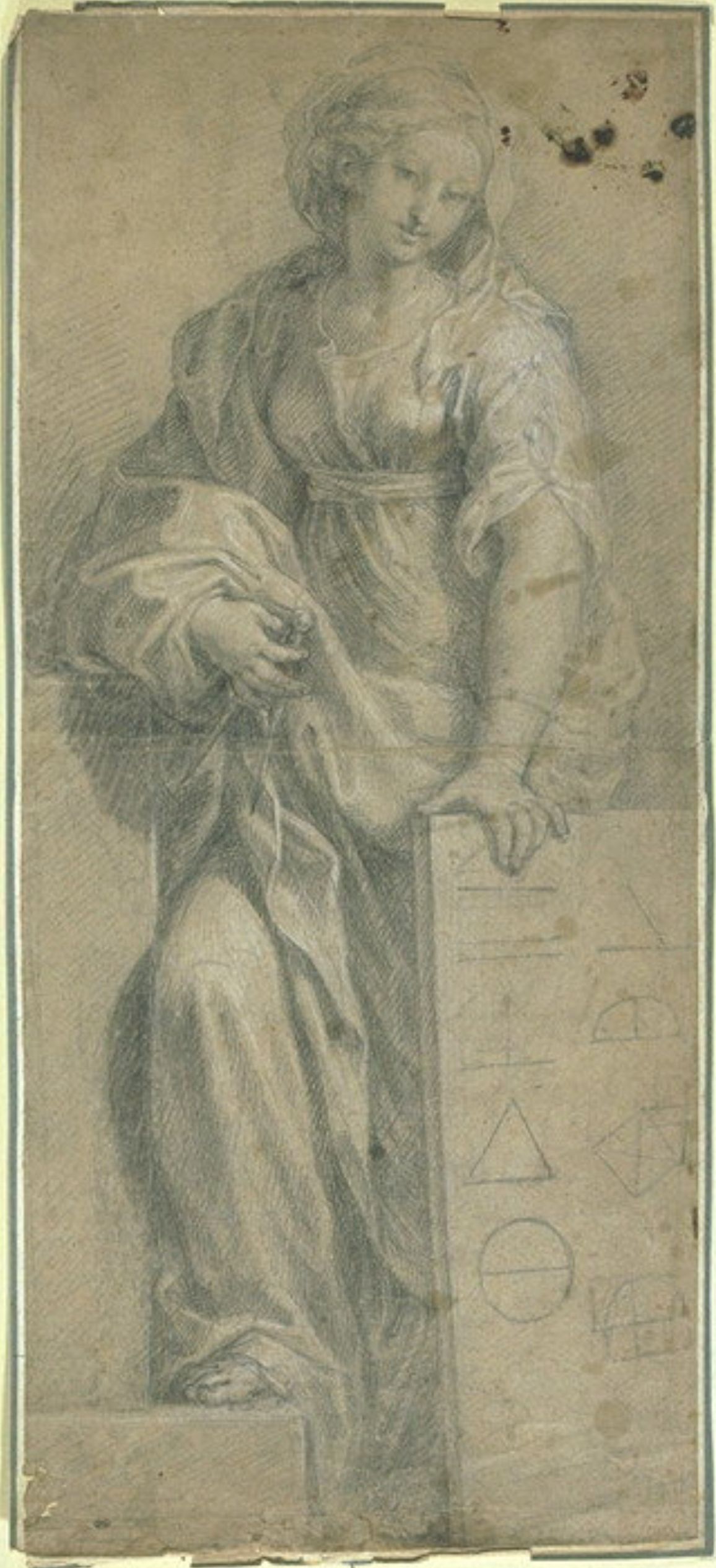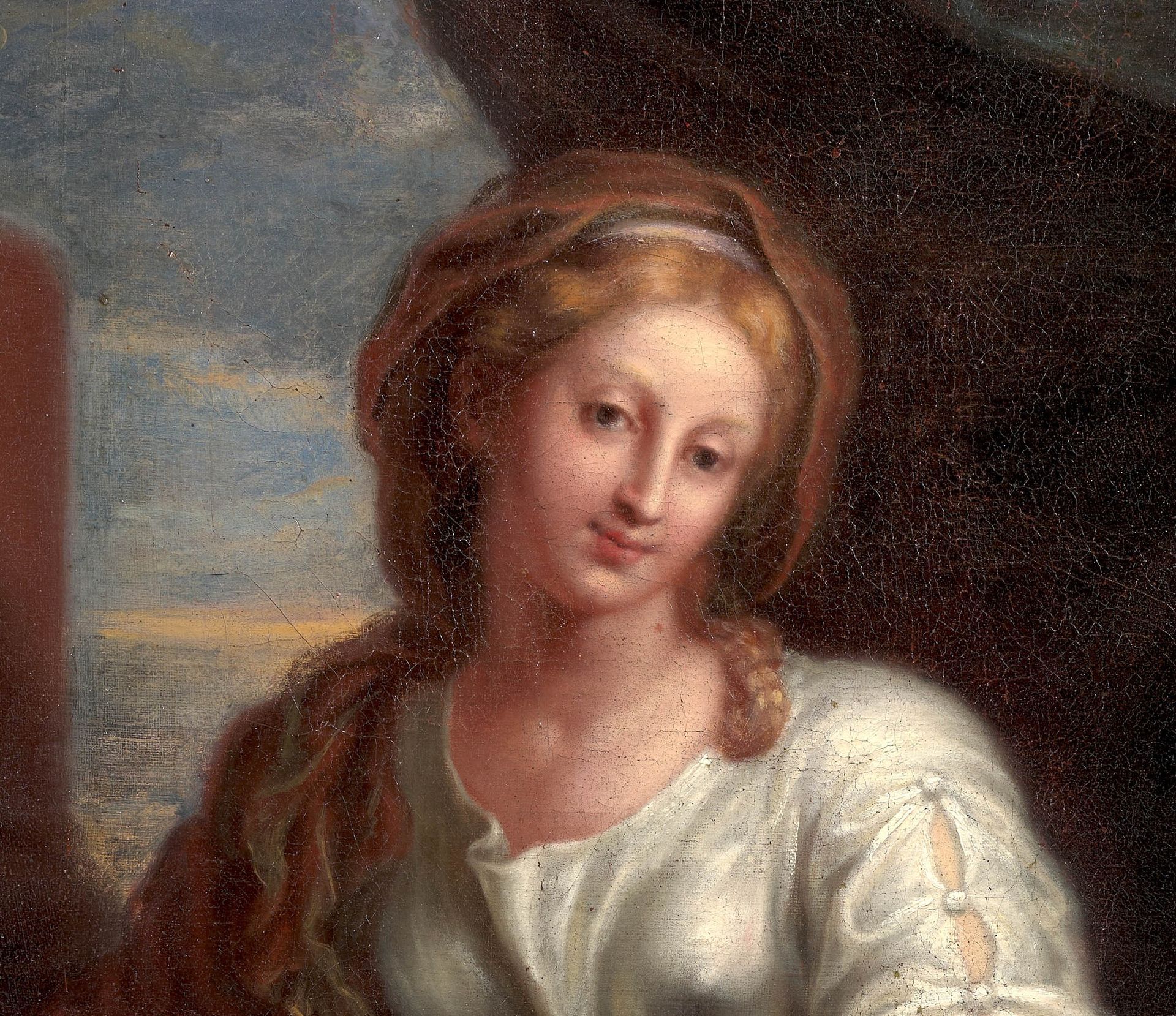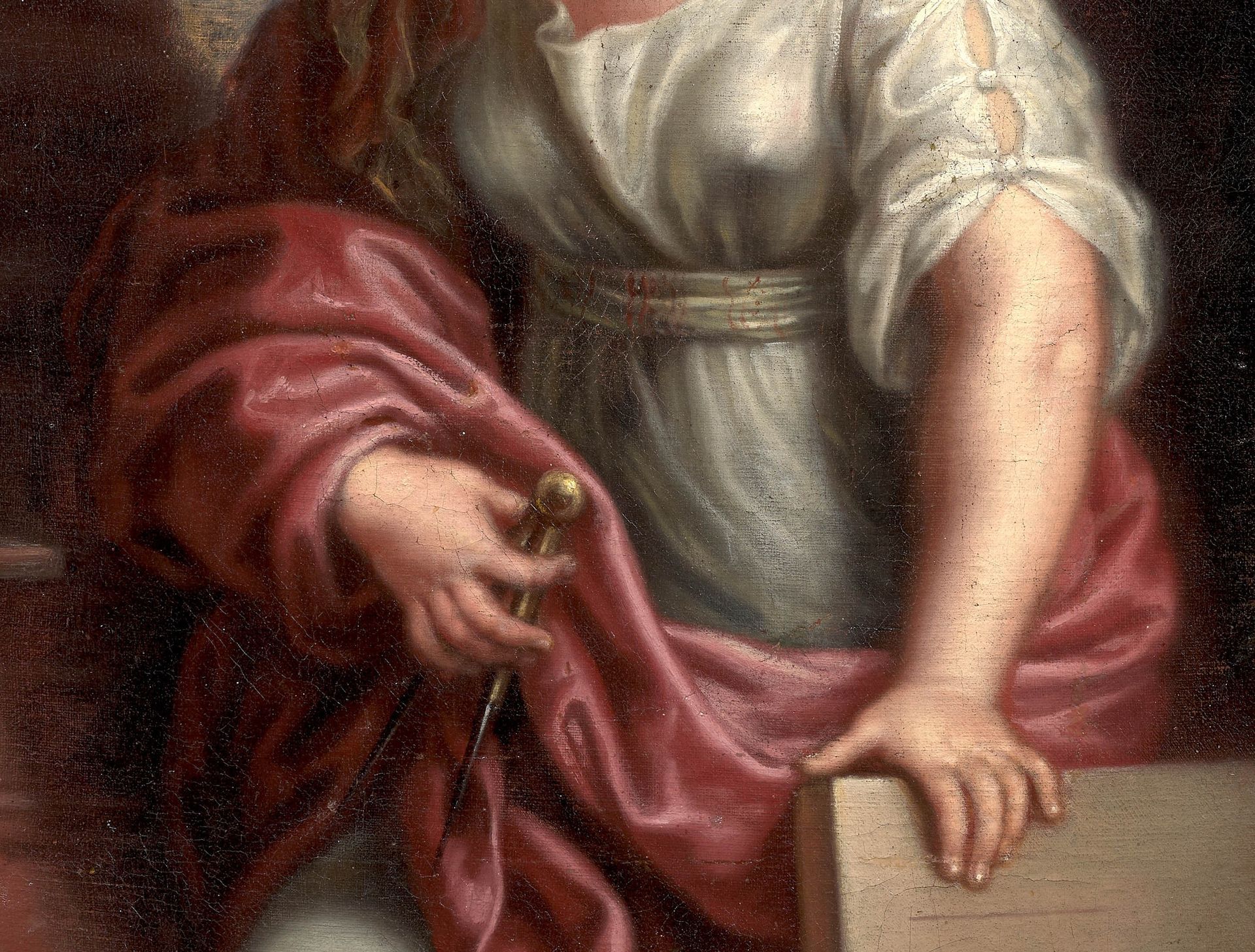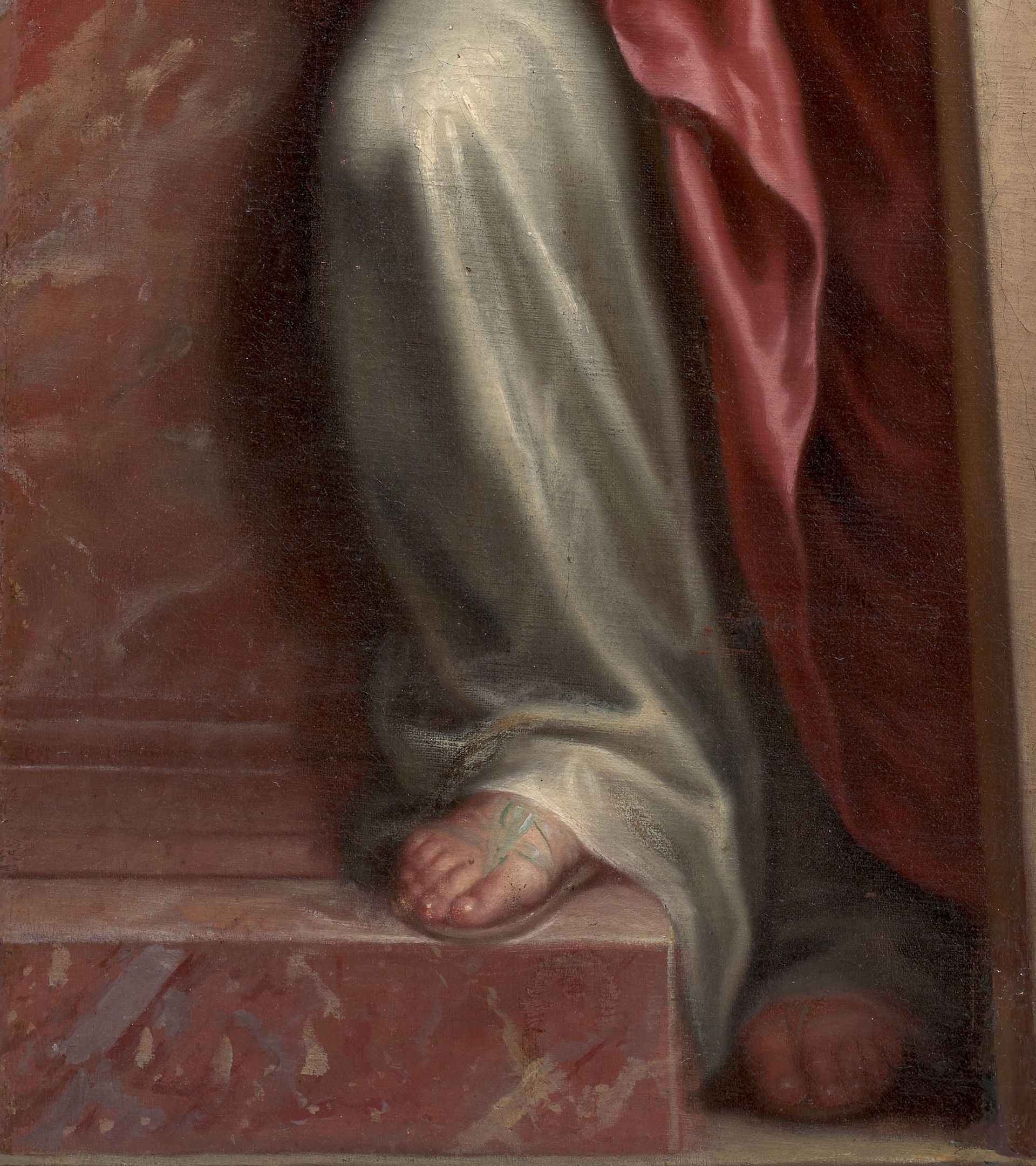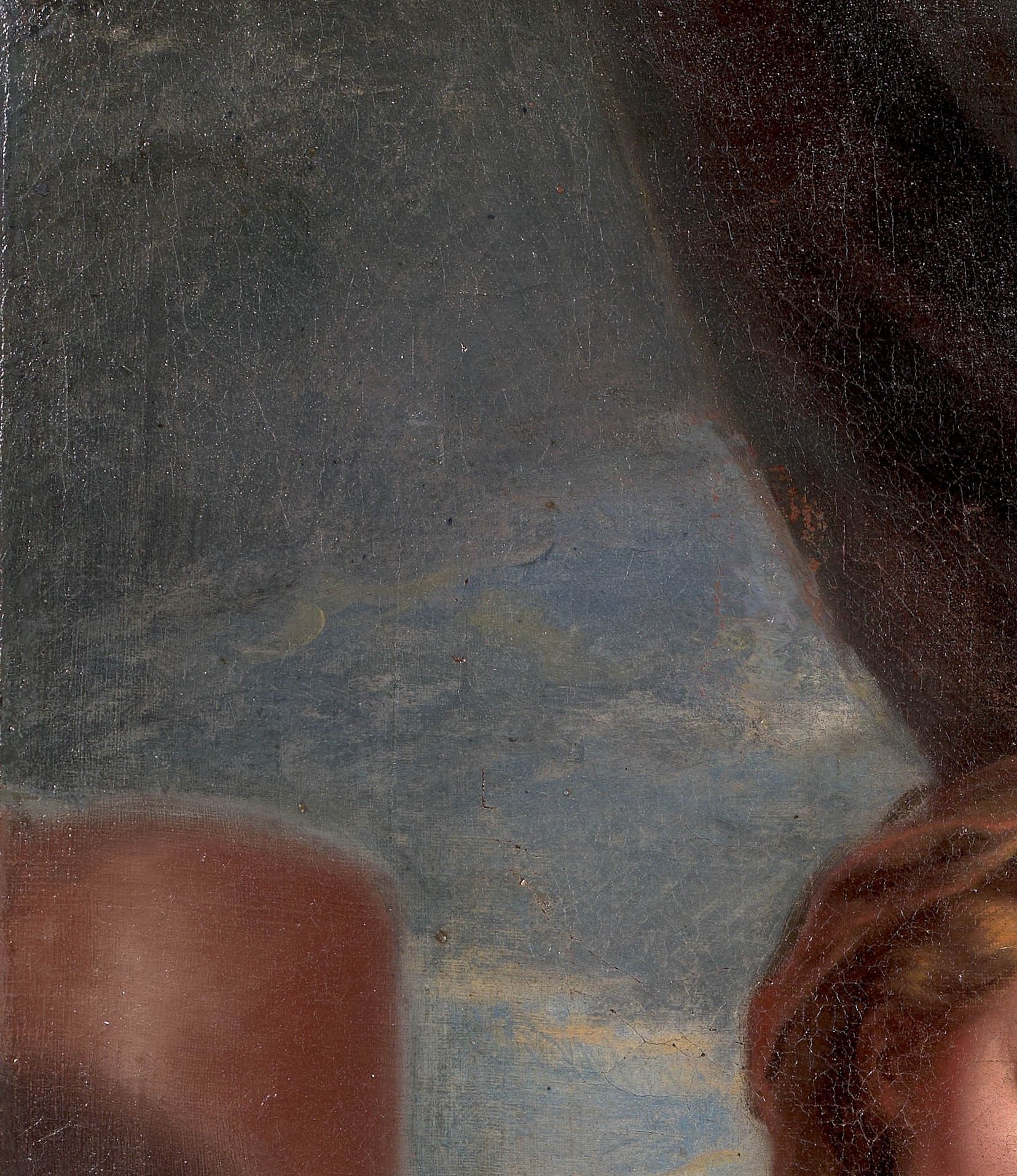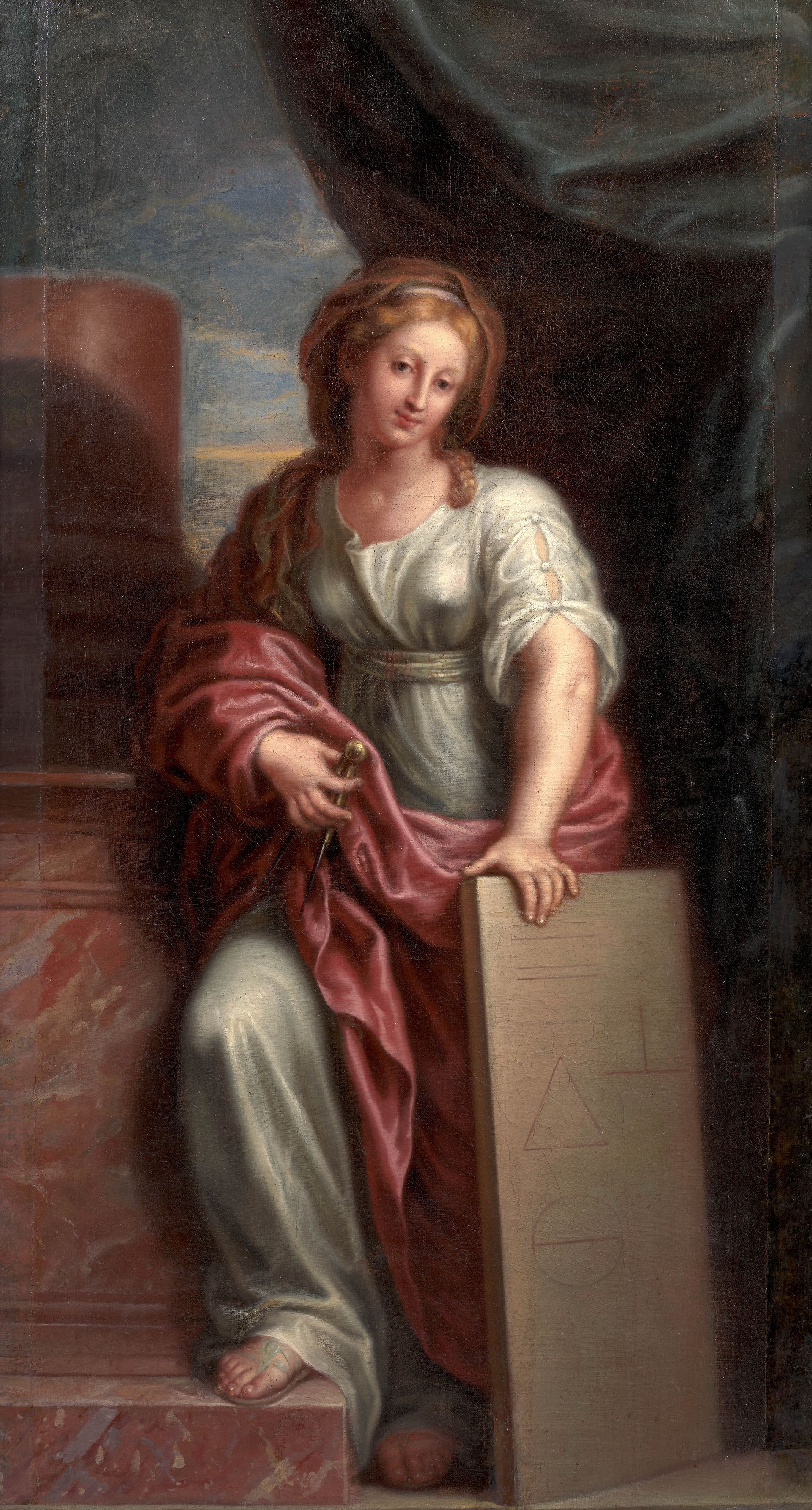
Michel II CORNEILLE known as Michel CORNEILLE the Younger (Paris, 1642 – id., 1708), Around 1680
Allegory of Geometry
Oil on canvas (Enlarged by two side strips of 4 and 5 cm), 118.5 x 66 cm
PROVENANCE
- Art Market, February 2025, as awarded to François Marot
THE ARTIST
Michel II Corneille (Paris, 1642- id., 1708) remains known as one of the most important French history painters of his generation.
After working in the service of the famous collector banker Everhard Jabach, he spent several years in Italy and was then admitted to the Royal Academy of Painting and Sculpture in 1663. Michel II Corneille was then to participate in the most prestigious royal commissions of the time. After having completed the painted decoration of the antechamber of the Queen's Apartments at the Palace of Versailles (in situ), he painted in 1686 the most prominent painting, undoubtedly thanks to the support of Louvois, for the new parish of Notre-Dame de Versailles (still in place; on this painting and the discovery of another version, see Fr. Marandet, "L'Église Notre-Dame de Versailles: nouveau lumière sur la commande de tableaux de 1686", Versalia, 2025, n° 28, pp. 157-172). He seems to have played a central role at the same time, during the undertaking of the so-called "Subjects of the Fable" tapestry. Later, between 1688 and 1693, he was commissioned to paint a series of paintings for the Trianon, but only delivered a part of them (in situ and at the Château de Versailles). Later still, he was to decorate the Saint-Grégoire chapel in the royal church of Les Invalides (which no longer exists, but is known from drawings and prints).
THE WORK
Alongside his work for the King's Buildings, Michel II Corneille produced numerous paintings for art lovers, although
their number remains rather small in museums at present. However, the painting we are presenting, completely unpublished, is related to another type of undertaking. Its vertical format and the nature of the subject, allegorical, clearly make it some panel of a decorative nature. Independently of its intrinsic style, the classification of our painting under the name of Michel II Corneille is confirmed by the existence of the preparatory drawing for the composition (fig. 1). This is kept in the graphic arts department of the Louvre Museum (inv. 34001. Black chalk and white highlights on beige paper. H. 0.58; W. 0.25). The only notable difference lies in the spatial framework that the artist was going to define more by means of the addition of a hanging as well as a truncated column on a pedestal.
FIG.1 © Paris, Louvre Museum
Representative Arithmetic, another drawing by Michel II Corneille from the same collection (fig. 2) also suggests the creation of a series of an allegorical nature (inv. 34049). Classified as anonymous since their seizure in the Saint-Morys collection, these two drawings were rightly returned to Michel II Corneille by Arnauld Brejon de Lavergnée (Barbara Brejon de Lavergnée et al., Simon Vouet or sensitive eloquence: drawings from the Staatsbibliothek of Munich (exhibition catalogue, Nantes, Musée des Beaux-arts), Paris, 2002 p. 19, repr. both). The rediscovery of this series, which is hardly documented by sources, whether the biography of Dezallier d'Argenville or even the notes of Pierre-Jean Mariette (although related to the Corneille family), raises the question of precedents. Indeed, the artist remains primarily known for his paintings of biblical and mythological subjects and certainly less for his contribution to allegory. In reality, old sales report certain testimonies in this area. Thus, the sale of the Marquise de Langeac, on April 2, 1778 (Lugt 2822) mentions, under no. 38, a Allegory of the Arts dedicated to M. Colbert by Michel II Corneille. The Calonne sale of May 11, 1789 (Lugt 4445) included, under no. 95, an "allegorical subject" by the same artist. Some allegorical paintings by Michel II Corneille have come down to us, although they are of a political nature. This is the case of The Allegory of the Crossing of the Rhine (Oil on canvas. H. 0.49; W. 0.73, Château de Versailles).
FIG.2 © Paris, Louvre Museum
In reality, the artist had painted pure allegories in the antechamber of the queen's apartments, but their location always made them discreet. Each of the spandrels shows, in fact, in the form of personifications, Diligence, Vigilance, the Academy, and Commerce. It should be noted in passing that the painting representing Aspasia conversing with the philosophers, in the same room, shows nothing other than a Greek geometer (probably Euclid) with his tablet; the idea is not far removed from that of our painting... But the most remarkable thing is the participation of Michel II Corneille, around 1683, in the famous painted decoration of the "Cabinet of Fine Arts" by Charles Perrault. The concept of modernity being dear to the commissioner, the old idea of the liberal arts had been erased in favor of the "modern" arts. Thus Optics painted by Corneille (lost but known from the engraving), actually appeared as the modernization of Astronomy (Urania). Now, it is obvious that the very subject of our painting returned to the "conservative" spirit of the liberal arts of which Geometry and Arithmetic were part. If we use the verb "to return", it is because the resolutely light tone of our painting contrasts with the majority of the works of Michel II Corneille conceived up to the 1680s. If our painting therefore belongs to the late phase of his production, the question of its destination remains mysterious. Should we imagine that Michel II Corneille would have entirely conceived, for the room of some wealthy individual, a cycle devoted to the liberal arts? If so, could it have constituted, at the heart of the famous quarrel opposing "Ancients" and "Moderns", a response to Perrault's enterprise? Another hypothesis deserves to be taken into account. Knowing Corneille's leading role at the Gobelins factory from 1684 onwards, he could have attempted to create a tapestry cartoon on the theme of the liberal arts. If so, he would certainly have rivaled Noël Coypel, the author of the cartoon representing Grammar among the Liberal Arts (Paris, Mobilier National; on deposit at the Musée du Grand Siècle, Saint-Cloud). The reappearance of other paintings by Corneille related to this commission will perhaps allow us to learn more.
The works painted by Michel II Corneille are extremely rare, with only around ten being offered on the art market in the last forty years, making the discovery of our painting all the more important.
DETAIL PHOTOGRAPHS


